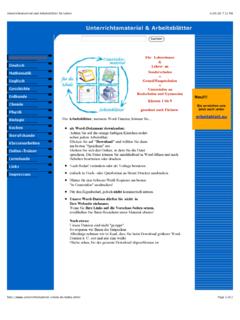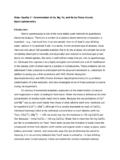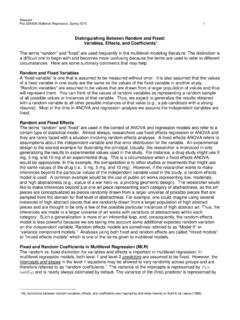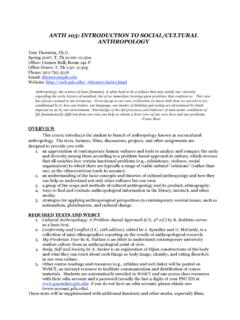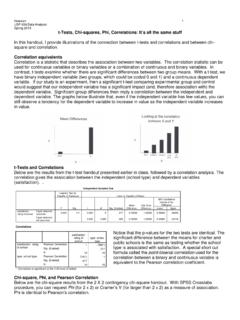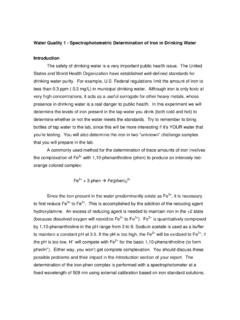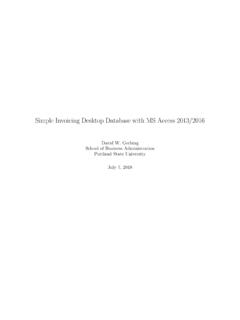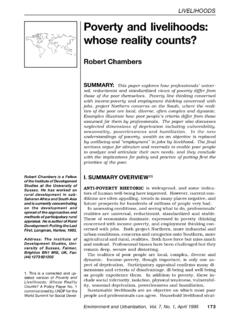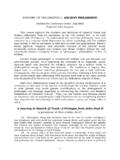Transcription of Policy Success, Policy Failure and Grey Areas In …
1 Policy success , Policy Failure and grey AreasIn-BetweenALLAN M CONNELLG overnment and International Relations,University of SydneyABSTRACTP olicy protagonists are keen to claim that Policy is successful whileopponents are more likely to frame policies as failures. The reality is thatpolicy outcomes are often somewhere in between these extremes. Anadded difficulty is that Policy has multiple dimensions, often succeedingin some respects but not in others, according to facts and theirinterpretation. This paper sets out a framework designed to capture thebundles of outcomes that indicate how successful or unsuccessful a policyhas been. It reviews existing literature on Policy evaluation andimprovement, public value, good practice, political strategy and policyfailure and success in order to identify what can be built on and gaps thatneed to befilled.
2 It conceives Policy as having three realms: processes,programs and politics. Policies may succeed and/or fail in each of theseand along a spectrum of success , resilient success , conflicted Success, precarious success and Failure . It concludes by examining contradictionsbetween different forms of success , including what is known colloquiallyas good politics but bad words: Policy success , Policy Failure , Policy evaluationAnalysis of public Policy involves a range of actors and takes place inmany forums with outcomes entering the public domain throughmeans such as government statements, newspaper editorials, non-governmental briefings and academic articles. Yet despite the seeminglynever-ending scrutiny and claims Policy has been successful , authori-tative closure on the issue of a Policy s success or otherwise can bedifficult to achieve.
3 As Dye ( p. ) argues:Does the government generally know what it is doing? Generally speaking,no .. (E)ven if programs and policies are well organized, efficiently operated,adequatelyfinanced, and generally supported by major interest groups, we maystill want to ask, So what? Do they work? Do these programs have anybeneficial effects on society? Are the effects immediate or long range?..Unfortunately, governments have done very little to answer these more , , , Cambridge University Press, course, politics is frequently partisan, and policies framed assuccessful by some political actors may be framed as unsuccessful byothers (Stone ; Fischer ).Intuitively, we know that the ideal of complete success is rarely shortcomings or failings permeate virtually all policies. Some aresmall such as afive-year bridge building project that is a few monthslate or achievement of a per cent budget cut instead of a target of.
4 Per cent. Others are considerable, such as a public health warningcontaining erroneous and potentially life-threatening information forsome individuals, or train services aiming for per cent punctualitybut only achieving per cent. The Policy sciences lack an over-arching heuristic framework which would allow analysts to approachthe multiple outcomes of policies in ways that move beyond the oftencrude, binary rhetoric of success and purpose of this paper is to advance our understanding bybuilding on recent work ( Marsh and McConnell a, b;Bovens ) by clearly defining Policy success and developing ananalysis which unfolds from this definition to its polar opposite, Failure ,and various shades in between. It draws on a wide range of literatureto illustrate why success and Failure are bound inexorably with word government is used throughout this article, whilstrecognising that modern public sectors are characterised by multifac-eted systems of governance, (see Bell and Hindmoor ; Osborne ).
5 The term is useful because it captures that aspect of successwhich relates to the values, aims and policies of elected paperfirst provides a brief overview of a variety of literature onsuccess and Failure in order to identify gaps and themes to build , it shows that dividing Policy into process, program andpolitical dimensions, allows us to conceive of successful and unsuccess-ful outcomes in each of these realms. Third, it defines Policy success onthe basis that it is a matter of fact as well as of interpretation. Fourth,it details a spectrum of outcomes from success to Failure . Finally, itsuggests that there are several main contradictions evident in theoverlap between the three different realms of Policy , including what isknown colloquially as good politics but bad We Need a New ApproachSix important strands can be highlighted as the contributions to ourthinking about success and Failure .
6 First, literature on Policy evaluationand Policy improvement is close to Lasswell s ( , ) vision of a McConnellpolicy sciences which contributes to societal betterment. Indeed, hedevotes over seven pages inA Pre-View of Policy Sciences, to more than detailed criteria of Policy , which are designed to provide guidanceto Policy scientists to bring about improved capability in the formationand execution of Policy (Lasswell p. ). Criteria range fromproviding dependable information to all members of the decisionmaking process, through to the need for internal appraisal to besupplemented by external appraisal. Political criteria are beyond thescope of his study on the assumption that political decisions are agiven. Failure is also beyond his scope, other than a general recognitionthat goals might not be writings are plentiful on the role of evaluation as aprocess for Policy refinement and learning, and on tools and techniquesfor achieving this (Gupta ; Weimer and Vining ; Miller andRobbins ).
7 As Policy analysis has developed, so too has its debatesand methods. The logic is that achieving Policy success resides in goodpolicy design, evaluating theex antelikely impact of proposed policies,rather than relying simply onex postevaluation to produce a stamp ofsuccess or Failure , or something in between that is followed by policyrefinement, change or even termination. More generally, the literatureon Policy evaluation and improvement contains different views onsuccess (usually implicit), taking political goals as a given and hencesuccess resides in meeting targets and achieving outcomes (Sanderson ; Boyne , ). Others are more sceptical of leaving politicsout of evaluation because doing so avoids questioning societal powerframeworks. They tend to assume that successful Policy is one whichredresses power imbalances, reduces inequalities and involves stake-holders in formulating Policy goals and evaluating results (Fischer ;Taylor and Balloch ; Pawson ).
8 Second, there is the concept of public value. It originates with MarkMoore ( ) as an antidote to the assumptions pervading Americandiscussion of government tending to be wasteful and bureaucratic. Hisstrategic triangle framework is a surrogate for what a successful publicsector looks like. Public value rests on three tests being met: (i)production of things of value to clients and stakeholders (ii) legitimacyin being able to attract resources and authority from the politicalauthorising environment and (iii) being operationally and administra-tively feasible (Moore p. ). Subsequent case studies and debateshow that public value is something of a slippery concept (see Rhodesand Wanna , , ; van Gestel et al. ; Steenhuisen andvan Eten ). Moore doesn t define public value and it is ascontested as the term public interest.
9 The reality of public bodies isthat they need to provide many and often conflicting values. InPolicy success , Policy Failure and grey Areas In-Between Moore s work, there is clear recognition that public value (as asurrogate for successful Policy ) does not rest on value being completelyachieved, but there is no indication of how analysts may capture valueshortfalls or conflicts. A new framework is needed which helps dealsystematically withdegreesof success and , a group of writings deal with good practice in the process ofpolicy making and management. Thefield includes writings on thebenefits of Policy design (Schneider and Ingram ), deliberation andpublic engagement (Gutmann and Thompson ), incrementalbargaining (Lindblom ), problem definition (Bardach ) andpeople skills (Mintrom ).
10 The term success is virtually absent butthe broad implication is clear. Good or successful process (which forexample, engages stakeholders in dialogue in order to pre-emptimplementation problems and cultivate Policy legitimacy) results inviable and successful programs. However, the nature of what consti-tutes successful Policy process can prove just as contested as policyimprovement or public value. For example, deliberation and publicengagement have been criticised as little more than an exercise in thelegitimation of dominant power (Shapiro ; Bishop and Davies ).Fourthly, writings on the political aspects of Policy have implicationsfor what constitutes political success . Programmes may assist orfrustrate leaders and governments in the pursuit of their agendas andaspirations. The nature of success is almost always implicit becauseconventions, constitutions and realpolitik are such that programsshould be (or at least be portrayed as) in the public interest, as opposedto that of a party s electoral prospects, elite interests or individualcareer ambitions (Machiavelli ; Edelman ; Bachrach andBaratz ).
